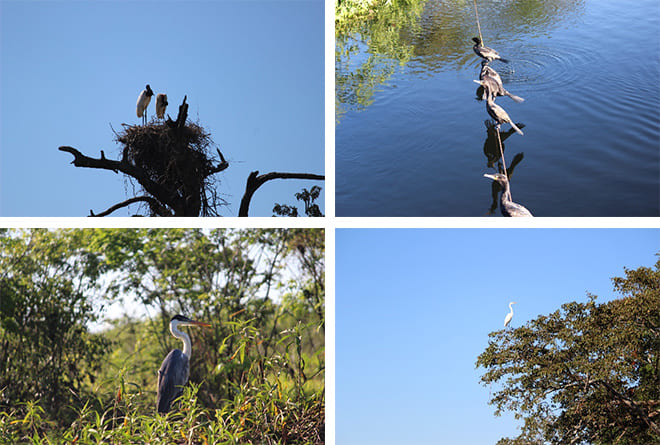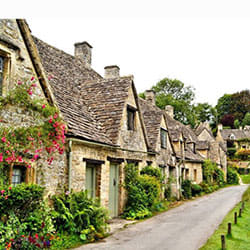About 150,000 square km of the Pantanal belongs to Brazil with 35% of that in Mato Grosso and 65% in Mato Grosso do Sul (The portion in Mato Grosso is called Northern Pantanal and the portion in Mato Grosso do Sul is called Southern Pantanal). Some 45,000 square km lie in neighboring eastern Bolivia and northern Paraguay.
About 70-80% of the Pantanal plains are submerged when the Paraguay River floods during the rainy season (October to April). They transform into grasslands when the water levels drop between 2 and 5 meters during the dry season, from May to September. The Pantanal has a diversity of wildlife and is especially known as a habitat for jaguars, which appear on river banks from the end of June, when the water levels have dropped about 2 meters. A lot of people come from around the world to see the jaguars.
I traveled to the Pantanal for the first time at the end of June. Traveling 1,500 km by car from São Paulo, I arrived on the third day in Cuiabá, the state capital of Mato Grosso in the south of Brazil. From Cuiabá I drove a further 100 km to the municipality of Poconé, which is called the gateway to the Northern Pantanal and the starting point for the “Transpantaneira,” the road that traverses the Pantanal. There is a wooden gateway where everyone stops to take a photo. It says “The Pantanal starts here,” which begins to lift the excitement level.

The Transpantaneira is a 145-km dirt road with some 120 bridges along the way. I was traveling south, so the endpoint was Porto Jofre (Port Jofre) on the border with Mato Gross do Sul. The first 50 km of the road was good, the bridges were made of concrete, but after that, there were fragile-looking wooden bridges, which I thought must be dreadful after rain.

Along the way I heard birdsong I had never heard before, there were caimans under the bridges, and even snakes crossing the road. The large nests on the tall tree tops were the nests of the “tuiuiú” (jabiru), the symbol of the Pantanal. This bird is in the same family as the white stork. The tuiuiú is an impressive bird, 160 cm long with a pure white body and a black head. I couldn’t drive fast along the dirt road, so going slowly and taking photos of the caimans and birds along the way, I arrived at the end of the road in 5 hours. I really felt as though I had seen plenty of different kinds of animals along the 145 km.

I stayed in Porto Jofre, the end of the Transpantaneira, at Hotel Pantanal Norte, which opened in 1984. When the hotel owners greeted me at the entrance, slowly striding along came a tuiuiú, as though to say hello. I was so impressed by its beauty, on top of the fact that I had never before seen a bird that was about my height.

Plus, having arrived in the evening, the birds were in full song in the different kinds of trees in the hotel garden. I shouldn’t have complained, but it was actually noisy. Looking up I saw a toucan with an orange beak, and macaws with completely blue bodies. There were various types of birds flying about from tree to tree. “I really have arrived in the Pantanal,” I thought, my heart lifting.

There were a lot of guests from America and Europe staying at the hotel. We found out that my husband and I were the only Brazilian guests on that day. The owner was very kind and friendly and came over to our table at dinner to tell us all sorts of things about the Pantanal.
Finally, the following day, we would see jaguars in the wild, our main purpose in coming to the Pantanal.
I will continue this story in the next article, so please come back again then.






























































